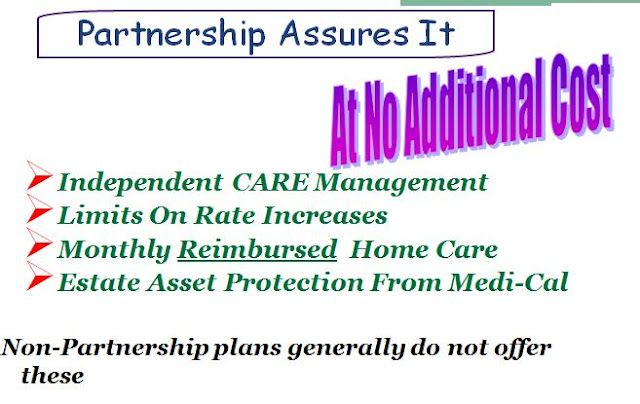NOTE I have add the color (red) comments, bold, and Italics.
Please note that the tax information provided is an interpretation of federal guidelines. Client/Agents should consult with their tax advisor regarding any tax-related issues.
2012 Tax
Advantages of Qualified LTC Insurance
Understanding the tax advantages and benefits of qualified LTCi can be
a benefit to you when working sales in both the individual and employer group
markets.
2013 Update
Attained Age
Before The Close Of Taxable Year
|
Eligible Annual
LTC Premiums
|
40 or Less
|
$350 2013 $360
|
More than 40 but
not more than 50
|
$660 $680
|
More than 50 but
not more than 60
|
$1,310 $1,360
|
More than 60 but
not more than 70
|
$3,500 $3,640
|
More than 70
|
$4,370 $4,550
|
For calendar year 2012, the per-diem limitation under 7702B(d)(4)
regarding periodic payments received under a qualified LTC insurance policy is $310.
INDIVIDUALS
Qualified Long Term Care insurance (LTCi) premiums
and expenses are deductible personal medical expenses for those who itemize.
For additional information see Section 213 of the Internal Revenue Code. Only
unreimbursed medical expenses in excess of 7.5% of adjusted gross income are
deductible based upon the government age-based table. This must change. There should be an above the line deduction of LTC. Tax credits would also make it more affordable.
PASS THROUGH ENTITIES
Self-employed Individuals
Under
Section 7702B(a)(3), a self-employed person may deduct 100% of premium paid for
the individual, as well as the individual’s spouse and dependents, up to the
maximum eligible allowed as indicated in the above chart without regard to the
7.5% limitation.
LIMITED LIABILITY CORPORATIONS, PARTNERSHIPS & S-CORPORATION
2%+ OWNERS
The above entity business owners are all treated as
if they are partners. LTCi premiums have been classified as health insurance
under Section 7702B(a)(3) and when the business pays the premium, it is 100%
tax deductible by the business entity. The LTCi premium becomes taxable income to
the business owner as “guaranteed” income. IRC Section 707(c); IRC Section 162;
IRC Section 61. From the business owner’s tax return and applicable schedule
used for business income and expenses, the eligible premium for long term care
will be an above the line tax deduction.
C-CORPORATIONS, PC CORPORATIONS & TAX-EXEMPT
ORGANIZATIONS
The above businesses may deduct, as a business
expense, all qualified LTCi premiums paid for its employees, employees’ spouses
and dependents, as well as retirees and their spouses. This includes the
business owner, who is considered an employee of the corporation. The
employer’s contributions toward the cost of the premium are not included as
imputed income to the employee. IRC Section 162(1); IRC Section 106.
CONTRIBUTORY ARRANGEMENTS
When the employer and the employee share the cost of
the LTCi premium, the company may deduct all premium it contributes for
qualified LTCi plans as a business expense. Premiums paid for spouses and
dependents of employees and retirees and their spouses, are treated similarly.
For federal income tax purposes, the employee’s portion of the premium is
treated as if paid by the individual, and is deductible – subject to the age
based limits for individual taxpayers – if the employee’s total unreimbursed
medical expenses, including qualified LTCi premiums, exceed 7.5% of the
employees adjusted gross income.
PER DIEM CONTRACTS
For
2012, the tax-free receipt of benefits under a per diem policy is limited so
that policyholders will be taxed on the amount of benefits which exceeds the
greater of $310 per day or the amount of qualified long term care expenses
incurred by the insured.
Source:
http://www.irs.gov/pub/irs-drop/rp-11-52.pdf This is not providing tax or legal advice. You should
consult your own tax, legal or other professional advisor before promoting
these products to your clients. To ensure compliance with requirements imposed
by the IRS in Cir. 230, we inform you that, unless expressly stated otherwise,
any U.S. federal tax advice contained in this communication (including any
attachments) is not intended or written to be used, and cannot be used, for the
purpose of (i) avoiding penalties under the Internal Revenue Code or (ii) promoting,
marketing, or recommending to another party any transaction or matter addressed
herein.

















